#genetic archaeology
Explore tagged Tumblr posts
Text
A team of 91 researchers—including famed geneticist Eske Willerslev at the Lundbeck Foundation GeoGenetics Center, University of Copenhagen—has discovered a Bronze Age genetic divergence connected to eastern and western Mediterranean Indo-European language speakers. Findings indicate that Spanish, French and Italian populations received steppe ancestry from Bell Beaker groups, while Greek and Armenian groups acquired ancestry directly from Yamnaya populations. Their results are consistent with the Italo-Celtic and Graeco-Armenian linguistic models.
Continue Reading.
87 notes
·
View notes
Text

“Disco Genetico” ~ colombia
#ooparts#archaeology#consciousness#genetics#ancient#archeology#energy#light#alchemy#magic#esoteric#science#technology#extraterrestrial#remote viewing#psychic#dna#artifact#anthropology
30 notes
·
View notes
Text
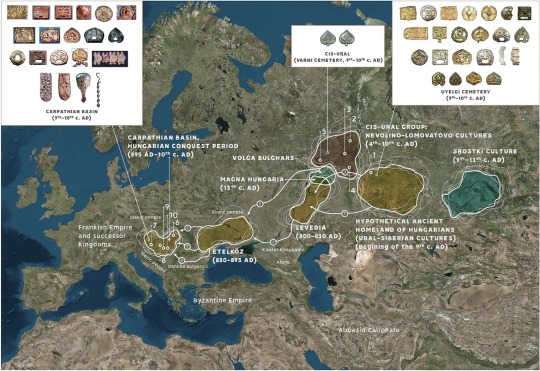
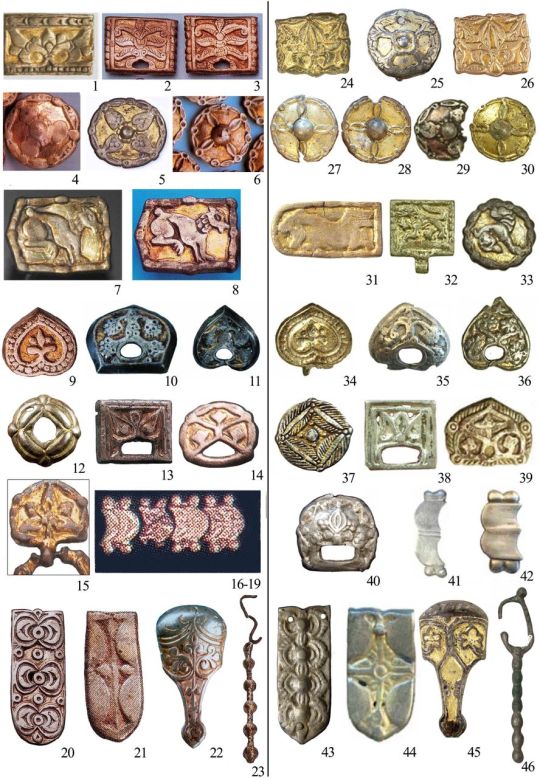
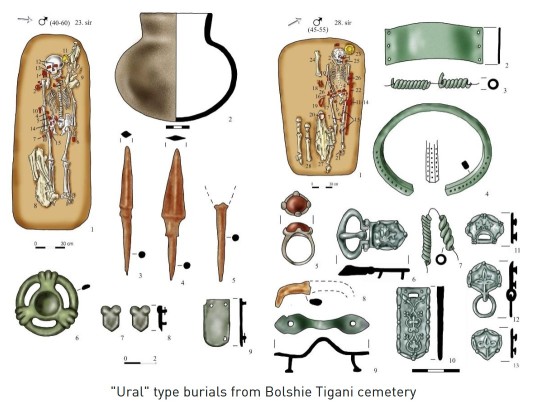
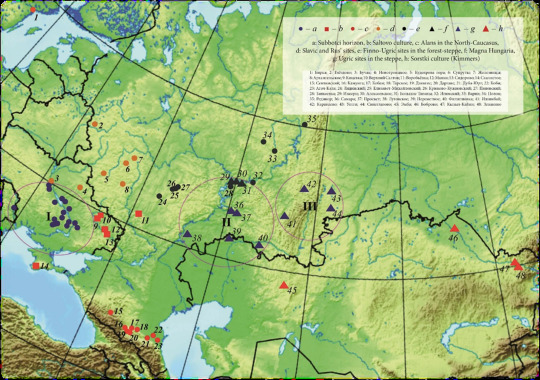

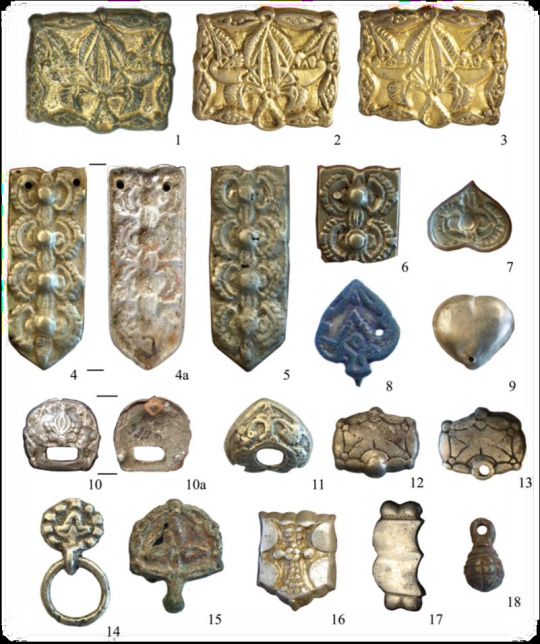
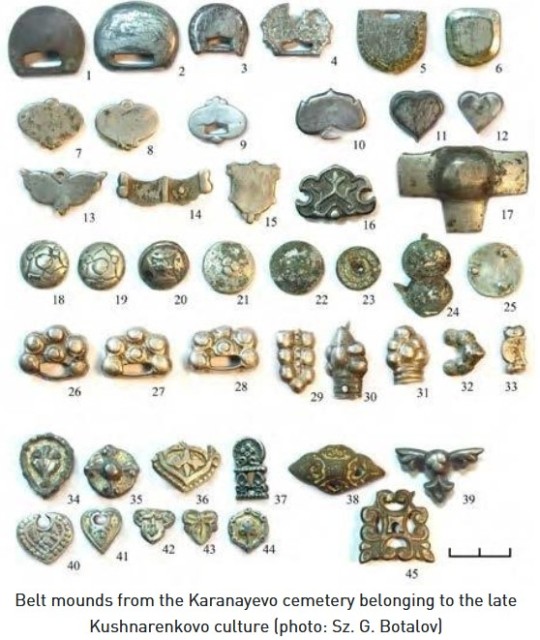


Miscellaneous Hungarian archaeological items from the migration era, from the Urals to the Carpathians 9th-10th C. CE. Sources can be found on my blog, link at bottom.
The Magyars, as a nation, seem to have originated in the region of the Urals and Volga and their original territory covered a large amount of what is European Russia today. This region was known as Magna Hungaria or Ancient Hungary in the Middle Ages. In the 13th century Christian monks tried unsuccessfully to convert the Pagan inhabitants of Ancient Hungary, who they noted spoke the same language as the Hungarians in the Carpathian Basin (will post more on this later). Now genetics show they were related too. Some of the Hungarians in the Carpathian region were found to be direct family members of these Uralic-based Hungarians according to this genetic study below. I grabbed some highlights of genetics article here and included some archaeological image finds:
"Two recent articles have investigated the Y-haplogroup variability of Hungarian conquerors describing the conqueror’s elite population as heterogenous, with significant proportion of European, Finno-Permic, Caucasian and Siberian (or East Eurasian) paternal lineages. Fóthi et al. have claimed that the Hungarian conquerors originated from three distant sources: Inner Asia (Lake Baikal – Altai Mountains), Western Siberia – Southern Urals (Finno-Ugric peoples) and the Black Sea – Northern Caucasus (Northern Caucasian Turks, Alans, and Eastern Europeans). Both studies pointed out the presence of the Y-haplogroup N-Z1936 (also known as N3a4-Z1936 under N-Tat/M46), which is frequent among Finno-Ugric speaking peoples.
...The genetic connection of Uyelgi cemetery in the Trans-Ural and 10th century Hungarian conquerors in the Carpathian Basin is supposed by close maternal relationships of the following individuals: Uyelgi3 from Kurgan 28 of the youngest horizon and three Hungarian conquerors from Karos II cemetery have identical U4d2 mitogenome haplotype (Supplementary Fig. S4p). Furthermore, the mtDNA A12a lineage of Hconq3 (30-40 years old woman from Harta cemetery dated to the first half of 10th century AD) is an ancestor of the mtDNA lineage of Uyelgi7 (from Kurgan 30 of the youngest horizon of the cemetery) based on the A12a haplogroup tree (see Supplementary Fig. S4a).
The mentioned graves from Uylegi show the characteristic of the Srostki culture, where the gilt silver mounts with plant ornaments were typical, and which was disseminated from the Siberian Minusinsk Depression and the Altai region through the Baraba Steppe and North-Kazakhstan to the Trans-Ural region (Fig. 1).
The connection of Uyelgi cemetery and Hungarian conquerors is visible on the N1a1a1a1a branch of the tree of haplogroup N1a1 too, that was prevalent among the ancient Hungarians (Fig. 5). Here seven Hungarian conqueror samples from cemeteries Kenézlő-Fazekaszug, Orosháza-Görbicstanya and Karos-Eperjesszög clustered together on one branch, while the five Uyelgi samples from the earliest and latest horizons are located together next to this branch.
Majority of Uyelgi males belonged to Y chromosome haplogroup N, and according to combined STR, SNP and Network analyses they belong to the same subclade within N-M46 (also known as N-tat and N1a1-M46 in ISOGG 14.255). N-M46 nowadays is a geographically widely distributed paternal lineage from East of Siberia to Scandinavia. One of its subclades is N-Z1936 (also known as N3a4 and N1a1a1a1a2 in ISOGG 14.255), which is prominent among Uralic speaking populations, probably originated from the Ural region as well and mainly distributed from the West of Ural Mountains to Scandinavia (Finland). Seven samples of Uyelgi site most probably belong to N-Y24365 (also known as N-B545 and N1a1a1a1a2a1c2 in ISOGG 14.255) under N-Z1936, a specific subclade that can be found almost exclusively in todays’ Tatarstan, Bashkortostan and Hungary (ISOGG, Yfull)."
-Early Medieval Genetic Data from Ural Region Evaluated in the Light of Archaeological Evidence of Ancient Hungarians
#magyar#hungarian#archaeology#genetics#hungarian art#history#art#europe#middle ages#medieval#finno ugric#pagan
44 notes
·
View notes
Text
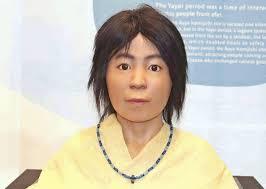
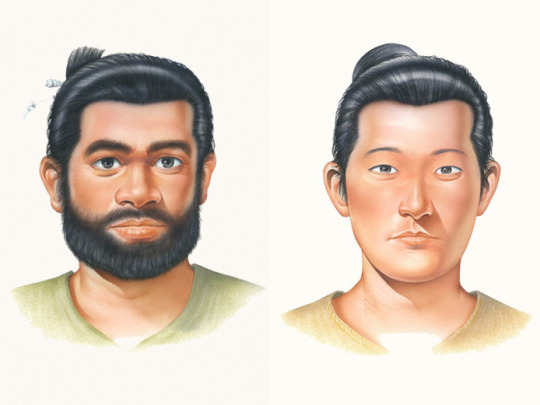

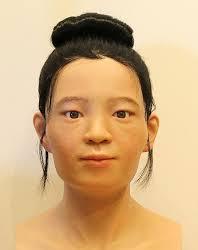
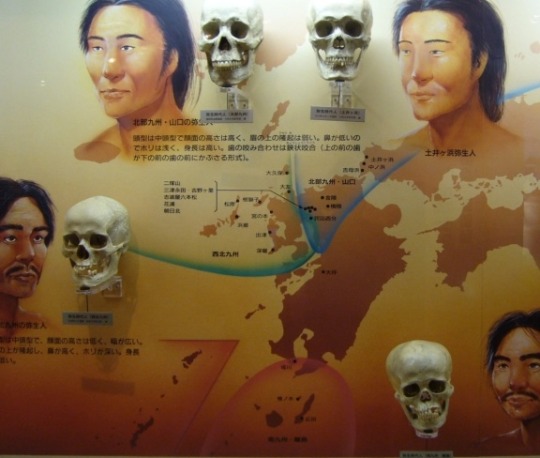
Sean bienvenidos amantes del mundo japonés a una nueva publicación, en este caso voy a dar mi opinión sobre uno de los hallazgos que se han hecho en el país del sol naciente y que tiene que ver con el rostro del niño reconstruido y de cómo la genética se aplica a la arqueología espero que os guste.
-
Antes que nada, el periodo yayoi abarca las siguientes fechas, 300a. C 300 d.C estas fechas son las tradicionales, aunque hay estudios más recientes del siglo IX antes de Cristo desde la península de Kyūshū, pero bueno, eso serán otras publicaciones que realizaré sobre el tema, pero en este caso nos vamos a centrar en este hallazgo este hombre se llama Aoya kamijiro.
-
Fue creado en octubre de 2021, ya que 1998 se encontraron unos restos arqueológicos de más de cien huesos humanos por lo cual es una tarea complicada, pero que nos permite reconstruir las facciones y no solo de la gente prehistórica, sino también de la propia historia como del mundo antiguo y de muchas épocas históricas.
-
Esto se obtiene a raíz de los huesos de los que se pueden extraer pequeñas muestras que son las que nos permitirán, saber si el individuo en cuestión era masculino era femenino y si padecía patologías.
-
Las nuevas tecnologías nos permitirán reconstruir fiel miente de alguna forma u otra el rostro, a la cual parece, ya que esto es un avance muy notable, tanto en la genética como en la arqueología porque podemos reconstruir bastante bien a la gente del pasado no sobre toda la población, que suele estar olvida en un segundo plano.
-
Espero que os haya gustado que pasen una buena semana.
-
日本を愛する皆さん、新しい出版物へようこそ。今回は、日出ずる国で行われた、復元された子供の顔と遺伝学に関係する発見の 1 つについて、私の意見を述べたいと思います。考古学にも応用できると思います。
-
まず、弥生時代は以下の300aの年代になります。 西暦 300 年頃 これらの日付は伝統的なものですが、九州半島からは紀元前 9 世紀に関するより最近の研究もありますが、それはまた別の出版物でこのテーマについて行う予定ですが、この場合は次のようにします。この発見に焦点を当ててください この男の名前は青谷神代です。
-
1998年に100体以上の人骨の考古学的遺跡が発見されて以来、この計画は2021年10月に作成された。そのため複雑な作業ではあるが、先史時代の人々の派閥だけでなく、古代世界や歴史上のさまざまな時代からの歴史そのものです。
-
これは骨から得られるもので、少量のサンプルを抽出することで、問題の人物が男性か女性か、また病状を患っていたかどうかを知ることができます。
-
新しいテクノロジーにより、何らかの方法で、その顔に見える顔を忠実に復元できるようになります。これは、遺伝学と考古学の両方において非常に注目に値する進歩です。なぜなら、私たちは過去の人々についてではなく、非常によく復元できるからです。国民全体が、通常��背景に隠れて忘れ去られています。
-
気に入っていただければ幸いです。良い一週間をお過ごしください。
-
Welcome lovers of the Japanese world to a new publication, in this case I am going to give my opinion on one of the discoveries that have been made in the country of the rising sun and that has to do with the reconstructed child's face and how genetics It applies to archeology. I hope you like it.
-
First of all, the yayoi period covers the following dates, 300a. C 300 AD These dates are the traditional ones, although there are more recent studies from the 9th century BC from the Kyūshū peninsula, but well, that will be other publications that I will make on the subject, but in this case we are going to focus on this discovery This man's name is Aoya kamijiro.
-
It was created in October 2021, since archaeological remains of more than one hundred human bones were found in 1998, which is why it is a complicated task, but it allows us to reconstruct the factions and not only of the prehistoric people, but also of history itself. as from the ancient world and from many historical periods.
-
This is obtained from the bones from which small samples can be extracted that will allow us to know if the individual in question was male or female and if he suffered from pathologies.
-
New technologies will allow us to faithfully reconstruct the face, in some way or another, to which it appears, since this is a very notable advance, both in genetics and in archeology because we can reconstruct quite well the people of the past not about the entire population, which is usually forgotten in the background.
-
I hope you liked it and have a good week.
#Yayoi period#prehistory#neolithic#archaeology#unesco#culture#history#DNA#Tottori prefecture#geography#humans#弥生時代#先史時代#新石器時代#考古学#ユネスコ#文化#歴史#鳥取県#芸術#人類#九州#Kyushu#biology#genetics#archaeological site#生物学#遺伝学#写真#Photography
37 notes
·
View notes
Text
Donald Trump must be a really good genetic archaeologist and biologist - He's brought back the Homo Neanderthalensis!
#politics#humanity#anthropology#archaeology#biology#genetics#homo neanderthalensis#neanderthal#trump#maga#fuck trump#trump is a threat to democracy#trump is the enemy of the people
12 notes
·
View notes
Text
Hello! I used to have this domain as a studyblr but since finishing my masters, I saw little point in continuing that route so I decided to start from scratch. So consider this a little introduction back into this site that feels completely strange to me despite growing up in the Tumblr golden era.
My name is Lis, I'm a PhD student in Scientific Archaeology focusing on the effects of animal domestication in Central Europe. I'm currently struggling to find a passion for a subject that I genuinely love so I'm hoping that coming back to this little corner of the internet will reignite my love for history and learning.
#studyblr#archaeology#history#ancient history#culture#anthropology#european history#ancient culture#genomics#genetics#phd diaries
77 notes
·
View notes
Text
9 notes
·
View notes
Text
61 notes
·
View notes
Text
If this truly does pinpoint the land of Punt, it is such important news for Egyptology.
38 notes
·
View notes
Text
A new language database narrows search for the first speakers of Indo-European
Using an improved dataset, a team of linguists and geneticists have updated their model of how we think the Indo-European languages spread.
You can compare their new model with the former Kurgan hypothesis in these two maps:
The Kurgan Hypothesis (previous widely-accepted theory)

The Fertile Crescent Hypothesis (new theory)

The two biggest changes are:
An earlier date (8,100 YA or 6,100 BCE) for Proto-Indo-European, the language from which all Indo-European languages descend.
A homeland near the Fertile Crescent, followed by later expansions into Anatolia and the Pontic-Caspian Steppe.
If true, this would date the Indo-European language family to a thousand years older than previous estimates.
It also neatly combines the two previous most prominent hypotheses—the Anatolian hypothesis (claiming that Indo-European originated in Anatolia), and the Kurgan hypothesis (claiming that Indo-European originated in the Pontic-Caspian Steppe). Under this new model, Indo-European originated further south, then spread to each of those two regions at a later date.
Here’s some more coverage from Phys.org:
And you can peruse the open access database yourself here:
Want to learn more about the history of Indo-European? My book rec on this topic is “The horse, the wheel, and language”:

35 notes
·
View notes
Text
Around 40 000 years ago, Homo Sapiens came to Europe and genocided Homo Neanderthalensis (Adams event?). Thus, all modern humans in Europe and Northern Africa have a bit of Neanderthals DNA.
Logically, the Neanderthals DNA should have disappeared completely in modern humans by now... but it didn't. Why? Most likely because of adaptive introgression: process by which adaptation occurs via genetic variants that were introgressed into the recipient population from the donor population (introgression - incorporation of DNA from one species to the gene pool of another). Sapiens really needed some Neanderthals genes for protection from European infections.
The problem, however, is that Neanderthals genes protect us from infections in a short run. In a long run, our Sapiens bodies start to consider Neanderthals DNI as the alien DNI, causing rejection, which leads to different autoimmune disorders and sometimes even cancer. The bloodline curse we have to bear is paying for sinners of our ancestors...
In particular, biologists and archaeologists established a connection between Neanderthals DNI and kidney membranous neuropathy: the more you have Neanderthals genes, the higher the chance to develop such unpleasant disorder. COVID-19 severity is also dependent on the Neanderthal genome.
Neanderthals had lived in quite cold places in those times, and thus, they had to eat more meat. "Alas, though fat is easier to digest, it’s scarce in cold conditions, as prey animals themselves burn up their fat stores and grow lean. So Neanderthals must have eaten a great deal of protein, which is tough to metabolize and puts heavy demands on the liver and kidneys to remove toxic byproducts. In fact, we humans have a “protein ceiling” of between 35 and 50 percent of our diet; eating too much more can be dangerous. Ben-Dor thinks that Neanderthals’ bodies found a way to utilize more protein, developing enlarged livers and kidneys, and chests and pelvises that widened over the millennia to accommodate these beefed-up organs. To cope with the fat famine, Neanderthals probably also specialized in hunting gigantic animals like mammoths, which retain fat longer in poor conditions and require greater strength but less energy and speed to kill."
Since Neanderthals had such large kidneys, they needed a greater scale of kidney cleansing. And that's why they ate a lot of cranberries and lingonberries: even nowadays, cranberries extract is sold in pharmacies to people with kidney problems.
Cranberries properties: rich in antioxidant compounds, prevention of urinary tract infections, support anti-aging, skin health, heart health, reduce the risk of stomach ulcers, antibacterial properties, protect against certain cancers, support eye health and vision, promote a healthy immune system, etc.
Lingonberries are especially high in the antioxidant "anthocyanins," which is known to prevent oxidation of blood cholesterol and aid in keeping blood vessels healthy. Researchers believe these potent antioxidants may be able to help reduce the risk of heart disease and even some cancers.
Thus, people with kidney memranous neuropathy or with high risk of its development, people with severe post-COVID complications, people with high levels of Neanderthals DNI should come to Lithuania! :D We have a lot of cranberries and lingonberries sold not in pharmacies at wild prices but in average grocery stores! :D
#history#biology#medicine#archaeology#covid 19#post covid#membranous neuropathy#kidney disease#neanderthals#genetics#Lithuania#health#healthy food
8 notes
·
View notes
Text

Patapatani - Bolivia
#archaeology#genetics#hybrid#extraterrestrial#archeology#ancestry#energy#ancient#pyramid#consciousness#light#ascension#alchemy#magic#science#anthropology#aliens and ufos
7 notes
·
View notes
Text


Magyar grave finds from Uyelgi 9th-10th C. CE
"There is a connection of the South Ural region to the formation of many peoples. However, every year new evidence is found that ancient Hungarians lived in this territory. The studies of the bones from a burial ground in the South Ural region, and comparing the revealed haplotypes to those of the ancient Hungarians have served as the confirmation to this theory. The results of the research conducted by an international team of scientists have been published in the highly rated journal Scientific Reports (Q1).
Scientists have been studying this issue starting from the 19th century, but every year brings new archaeological finds, which "move" the ancient Hungarians farther east. In the Trans-Ural region, the main landmark of the era of the ancient Hungarians, which confirming the theory that they lived in the Volga-Ural region, is the Uyelgi cemetery in the Kunashaksky District of the Chelyabinsk Region.
The Uyelgi cemetery has been studied for over 10 years now. Skeletons of ancient people were found in the burial ground complex, as well as objects that had belonged to them in their lifetime: armour, jewellery, and fragments of horse harnesses. These finds are quite similar to the objects discovered in the Carpathian Basin, and this means that one can assume that the resettlement of the peoples from the Trans-Ural region to the territory of modern Hungary happened quickly, within the time of just several generations.
The researchers analyzed the genetic affinity of the ancient Hungarians to their presumable ancestors by studying the bones from the Uyelgi cemetery, as well as from burial grounds in the Perm Territory.
'The SUSU scientists were handling the empiric base, that is they were preparing reports to present the data to the public, and were collecting the bone materials. Our selection turned out to be the biggest one: 22 samples were presented. Based on these, a group of paleogeneticists from Hungary revealed the similarity in the haplotypes with the Hungarian population. At this stage we obtained new quality data that the history of the early Hungarians and proto-Hungarians is connected to the eastern regions,' shared Ivan Grudochko.
The paleogeneticists in the laboratory in Hungary determined at once several haplotypes (groups of forms of the same genes in the chromosome loci), which are found in the Hungarian conquerors and people buried in the Uyelgi cemetery. The scientists explain the phylogenetic affinity by the common genealogy. Later the ancestors of the Hungarians and the Ural people get divided by an Eastern component, the origin of which is yet to be discovered. According to a tentative version, those were the early Kipchak people who came from Altai.
Thus, the scientists have found out that the resettlement from the Trans-Ural region to Europe took place in the 9th century, but the peoples of these two territories maintained their connection in the later periods as well.
"Year after year this monument confirms our hypotheses with regard to the processes that were happening in the steppe zone of the South Ural region. It holds the traces of a 250-300-years epoch. Uyelgi has helped solve a whole series of problems of the culture genesis, the emerging of the cultures on the territory of big region, from Irtysh to Volga, and from Perm to the Central Kazakhstan," commented Sergei Botalov."
-South Ural State University, Paleogeneticists Confirm the Affinity of the Hungarians to the South Ural Region
13 notes
·
View notes